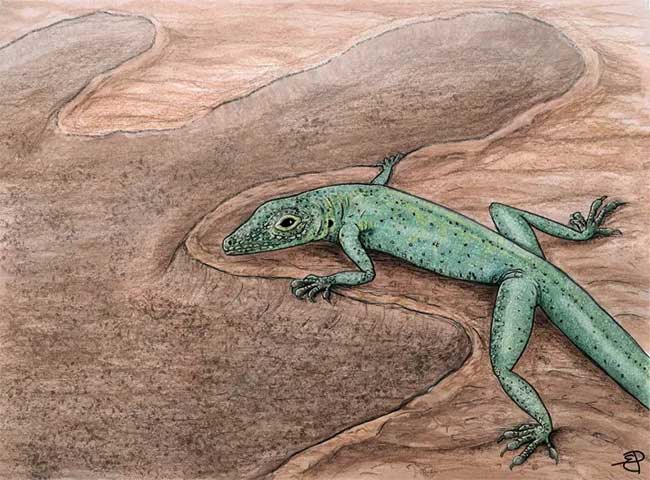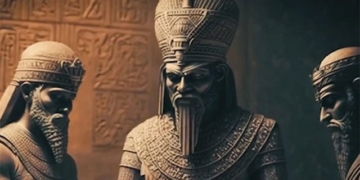The Evolutionary Secret of Reptiles Revealed Through Fossils of a Snake from 240 Million Years Ago
Paleontologists from across Europe have discovered a nearly complete skeleton of a reptile that lived during the Middle Jurassic period on the Isle of Skye, Scotland. The findings and analysis of this fossil have been published in the journal Nature.
The paleontologists believe that this skeleton could help us understand “the anatomical changes” that contributed to the evolution of today’s reptiles.

The discovered skeleton is of a species Bellairsia gracilis, also known as the scale-bone species.
This reptile lived 240 million years ago and is considered an ancestor of over 10,000 animal species today. This remarkable fossil dates back to the Middle Jurassic, approximately 167 million years ago.
Mateusz Tałanda from the University of Warsaw, who participated in the discovery, stated: “This fossil was discovered out of curiosity. We have many questions about the past. When I had the opportunity to work with such a special fossil, I felt very honored. The second wonderful moment was when we realized that we had found information in this skeleton that could answer one of the questions we had been wondering about for a long time.”
He continued: “So far, we know very little about modern lizard and snake groups. Most Mesozoic lizards are compared with modern groups for that reason. Bellairsia is changing our perspective and helping us recognize extinct lizard groups that we were unaware of. I hope that many Mesozoic lizards will belong to some ancient groups.”

This remarkable fossil dates back to the Middle Jurassic, approximately 167 million years ago.
After the fossil was discovered, scientists analyzed the skeleton using high-resolution X-rays. They found that the specimen exhibited both features of a common ancestor and many characteristics of later evolved species.
Tałanda noted: “After many years of research, we finally recognized the final evolutionary stage of lizards, just before the formation of modern reptile groups.”


















































